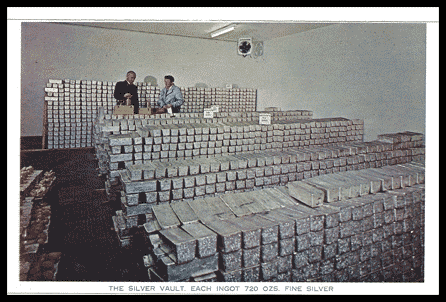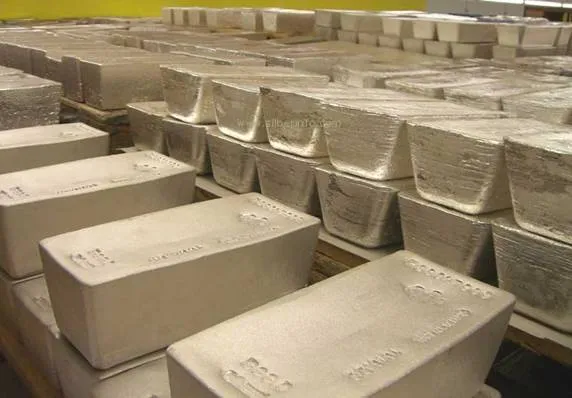For years now, many have been lured into the idea that silver is solely an industrial metal, and that it's future demand is likely to rely solely on industrial demand. The reason for this assumption largely has to with public's perception towards money. Here in the United States, we've had a fiat currency for over 40 years. Of course, before that, our currency was backed by silver, and then gold. Additionally, many of our coins contained a considerable amount of silver. The U.S. wasn't alone in this; countless nations around the world had either gold or silver backed currencies, or had gold and silver coins. This is the way money worked for thousands of years. Sure, fiat money had been tested before. China was the first to test paper fiat, back in the 10th century. However, time after time, people kept returning to silver and gold for use as money, and as a way to store and preserve wealth.
(Feel free to watch the video, or read on below)
Yet, in the 1970s, this all ended. The world turned solely to fiat currency. Sure, governments and central banks still hoard gold, but reserves of silver have been steadily dropping since then, to pitifully low levels (roughly 90 million ounces). Silver is simply not seen as money, by many individuals anymore. Don't get me wrong, industrial demand for silver is significant. It's part of the reason I think silver has a brighter future than gold, considering their current valuations. People sometimes call silver the bipolar metal, because it has significant demand for both industrial, but also wealth preservation purposes. Furthermore, I am not necessarily advocating for a silver standard. Perhaps we can talk more about that in another discussion, but there's a few problems with that, notably that I wouldn't trust a government to actually be honest about the amount of silver they had on hand to back a currency.

Rather, what I'm saying, is that when the next crash comes, and I think we are incredibly close, even if the Central Banks try and prop up the markets and economies of the world, we'll see a mass exodus out of paper assets. Maybe this will be out of fear, maybe it will be out of a realization of the shaky foundation upon which these assets sit, but I think we'll see many people flee out of bonds, derivatives, fiat, and the like. Not everyone will flee these assets, but I think it will still be significant. It will be a turbulent time, and many will seek safe have assets. Some will turn to gold, as has been the trend for decades now. However, I think its also quite likely that traders will rediscover the allure of silver as a safe haven asset. Some may turn to the paper silver markets, but I think there will be many investors, some large, some small, that will seek out physical silver.

I want to put out some numbers for you to consider. Right now, yearly silver production totals around 1 billion ounces, which worth roughly $17 billion dollars. Sounds like a lot, right? But let's imagine, that there is a rotation out of other asset classes, into precious metals. Like I said, I'm sure many would turn to papers versions, such as SLV. But there's also the chance that the paper charade in the metals markets, such as on the COMEX, will have ended, and that they will be seeking out the real, physical stuff. This is by no means a perfect prediction, because the price of silver would rise, and we'd likely have shortages, if this type of an asset rotation happened. Still, I want to make a point about how small the physical silver market is when compared to other asset classes. Again, yearly production of silver is worth around $17 billion. If only .1%, that's one dollar for every $1000, left the NYSE, that's be over $21 billion. That's well over the yearly production of silver, and that's only the NYSE, which is only a slice of the world's stock market cap. In fact, that's around 1.25 billion ounces of silver. But we're only getting started. If only .1% of the total value of U.S. retirement funds, went after silver, that'd be equal to about 1.5 billion ounces of silver. Again, that's just the U.S., and doesn't take into account the rest of the world. How about the global bond market, which is estimated at over $100 trillion dollars? That's roughly 6000 times the value of the yearly production of silver. That is insane. The worldwide derivatives market, which is hard to value exactly, but estimates put it around around $1.5 quadrillion, is roughly 90000 times larger than the value of one year's production of silver.

I could go on, but I'm doing this to get a few points across. First, you matter. A $17 billion dollar market is still a decent chunk of change. Even so, enough individual investors, put together, can hold some sway over the physical market. In fact, I think investment demand accounted for around 1 in 5 ounces mined last year. Second, the silver market value is laughably small. When I say laughably, I mean because it makes the manipulation so obvious. If silver was valued more realistically, it's market value would be much, much higher. Finally, it doesn't take much to move the physical market. Sure, the paper market is much, much larger. When we take into account paper contracts, derivatives, etc., it appears fairly considerable. But in reality, the value of yearly physical production, which essentially backs the paper market, is only around $17 billion. That's tiny, when you consider how much money could easily flow into the silver market in a time of turbulence. Now, maybe you understand why I think an acute, transitory, shortage is so possible. It also helps me understand how the Hunt Brothers cornered the market so easily, through accumulating physical silver. Today, the Koch brothers, or Bill Gates, could easily buy up a few hundred million ounces, and send the price soaring. I'm not saying that will happen, but I think it's quite possible that even the richest men in the world, could buy up a large chunk of yearly demand.

When the next recession or depression hits, there will be a scramble for the physical metal. People have flocked to precious metals for thousands of years, and I think many will rediscover the long-lasting value of owning silver. I'm not saying you should own silver solely for the investment nature. Even for me, it's something I see as a savings account, a way to preserve some wealth. Even so, there's nothing wrong with being excited about the investment prospects for silver.
Thanks for reading! Don't forget to upvote and resteem!
Image Sources: https://docs.google.com/document/d/1FxfQPaoj6mPXM9hqiF4-t7n8qAJy46WeSavIun8yTIs/edit?usp=sharing